- Home >>
- Destinations >>
- South America >>
- Galapagos Islands
Galapagos Tours with
Tucan Travel
A cruise to the Galápagos Islands is a once-in-a-lifetime opportunity, and one of the best ways to see wildlife up close. Many of the animal and bird species found here are unique to the islands, and have adapted themselves to suit the environment. The animals are fearless and roaming free which is perfect for photography. During your cruise you can also snorkel and swim for a chance to see marine life like rays and marine iguanas in their natural habitat. Many people choose to combine a cruise to the Galápagos Islands with a tour on mainland South America.
The Galápagos Islands
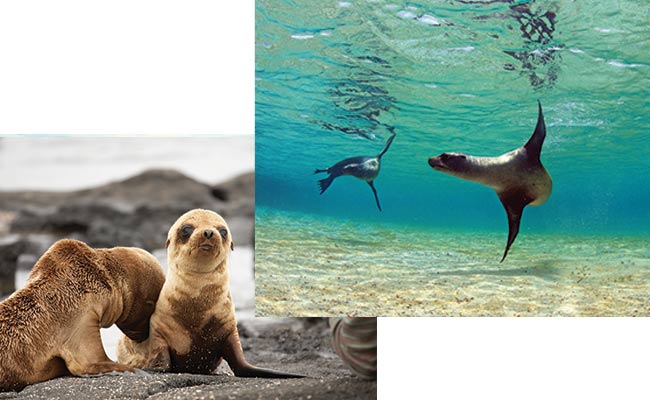
Planning your Galápagos Tour
When planning a big trip like one to the Galápagos Islands, it's important that every detail is perfect for you. That is why we have put together a guide to help you decide which route to take, the different islands and even which cabin type you might prefer. Here you will find information on the different cabin styles and on the type and kind of wildlife you will see on each island. And don't forget, our tailor-made team can put together your perfect South American holiday which combines the islands. For any questions, don't hesitate to contact a member of our Reservations Team for more information.

Back to Top
Group Tours of Galápagos with Tucan Travel
Tucan Travel offer a range of tours that visit the Galápagos Islands as well as itineraries that combine other countries in South America. You could choose a two week combined tour that includes the breathtaking, scenic train journey to the Inca citadel of Machu Picchu and a couple of days walking in the lush Amazon rainforest, before flying to Quito to begin the tour of the Galapagos.
The Iconic South America tour is perfect for seeing the highlights of South America. Start in the vibrant Cartagena - Colombia, see the famed Machu Picchu, relax by the serene Lake Titicaca and marvel at the natural wonder of Bolivia’s pink Laguna Colorada. Cruise around the wildlife haven of the Galápagos Islands before ending the tour with a bang in the party hub of Rio to salsa the night away.
Machu Picchu, Amazon & Galapagos
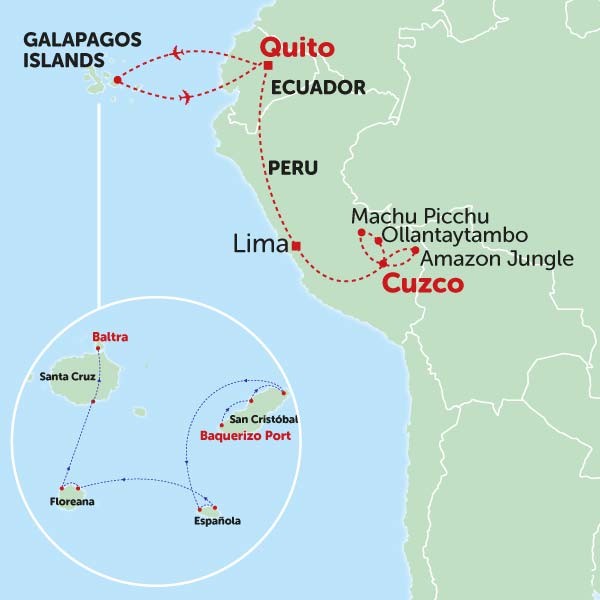
Duration:14 Days
Route:Cusco to Quito
Tour Code:PEAG
Iconic South
America
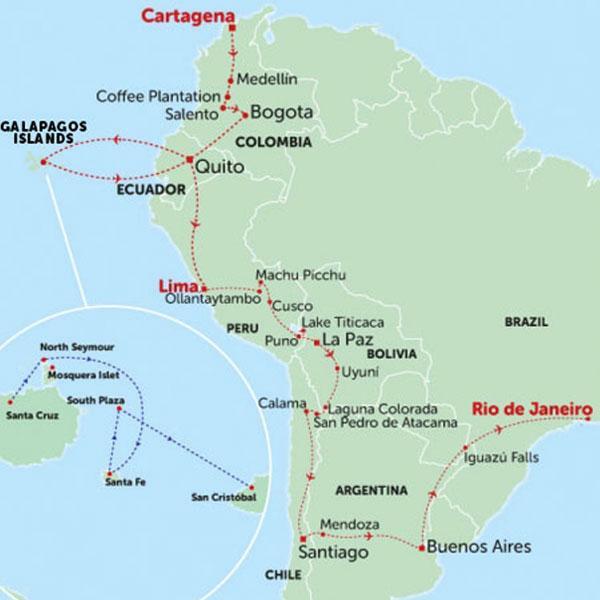
Duration:41 Days
Route:Cartagena to Rio de Janeiro
Tour Code:HIS
North Island
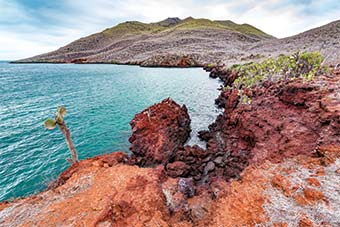
Santiago Island
Deep pools and caves are carved along the lava shoreline and iguanas, sea lions, fur seals, land and sea turtles, flamingoes, dolphins and sharks can be found in the waters and on the beaches. Darwin finches and hawks can be seen in the sky. Some of our cruises will stop at Sullivan Bay where you can view a pahoehoe lava flow.
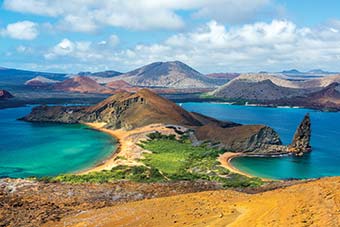
Bartolomé Island
A volcanic island, Bartolomé is where you can find the Galápagos penguin, the only penguin species to live on the equator. The green turtle can also be found on the island. Off the shore, there is excellent snorkelling opportunities with penguins and sea lions.
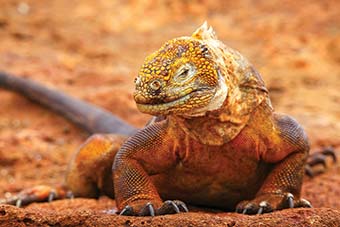
North Seymour
This island is one of the best places to see the birds of the Galápagos Islands. From blue-footed boobies to swallow-tailed gulls, here you can witness intimate courtship, breeding and nesting.
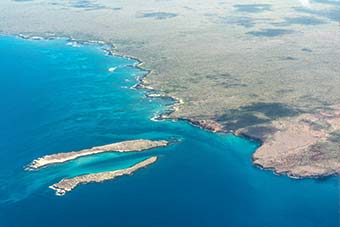
Baltra Island
Also known as South Seymour, Baltra has the Galápagos Islands largest airport. For this reason is normally the starting point for most Galápagos itineraries. There is spare wildlife here, although small finches can often be spotted as well as the occasional land iguana.
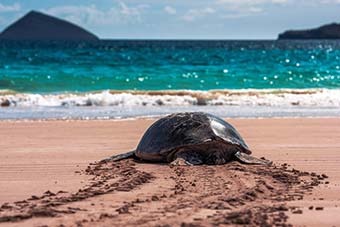
Santa Cruz
Santa Cruz hosts the largest town on the islands called Puerto Ayora. In this town you can visit the Charles Darwin Research Station where you can learn about the tortoise breeding programs. Across the island there are opportunities to see tortoises in their natural habitat. In the highlands of the island there are magnificient lava tunnels while in the waters around Black Turtle Cove sea turtles, rays and small sharks mate.
East Island
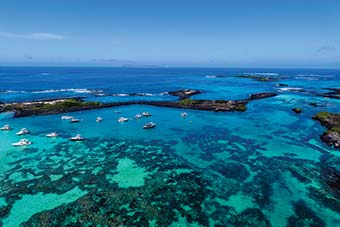
San Cristóbal Island
Charles Darwin's first landing spot, on this island is Puerto Baquerizo Moreno, the Galapagos' capital. It is also home to one of the Galapagos' two airports of which some Expedition Cruises fly in and out of. Here you can see frigate birds, sea lions, giant tortoises, blue and red footed boobies, tropic birds, marine iguanas, dolphins and swallow-tailed gulls. There is diverse vegetation across the island and a large freshwater lake in the highlands.
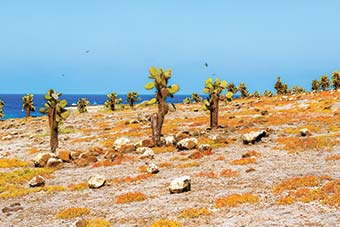
Santa Fe Island
Santa Fe is one of the most beautiful of the Galapagos' islands. Galápagos hawk, Darwin's finches and land iguanas habituate in sheltered coves. There is a forest of cactus on the island which gives it one of the most unique landscapes in the Galápagos and perfect for photography.
South Island
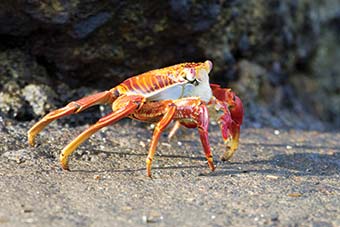
Santa Maria (Floreana)
Floreana Island is one of the most fascinating in terms of its human history. Due to the flat landscape, supply of water, plants and animals, this island was the favourite stop for whalers, merchants and shipmen. For some time there was a post office on the island. Floreana suffered the most and it is here that the native tortoise to the island became extinct. Today, you can see penguins and flamingoes and at Devil's Crown, you can swim with sting rays, sea turtle and sharks.
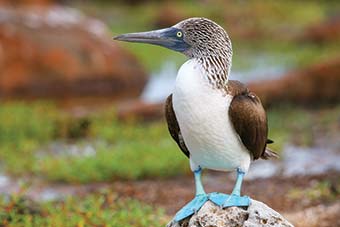
Española Island
Spot the waved albatross and blue-footed booby on this island as well as the Punta Suarez blowhole. Española is the oldest of the Galápagos islands and has a large number of endemic species including the lava lizard, mockingbird, and tortoise. The islands marine iguanas have a distinct red colouring while it is the only place in the Galápagos where the waved albatross nests.
West Island
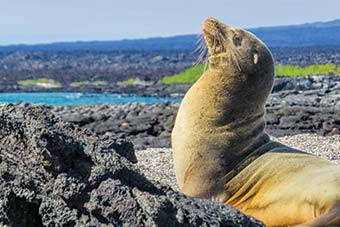
Fernandina Island
The youngest of the islands, in 2005 ash and water vapour rose above the island while lava flows ran down the slopes of the volcano. It is the only island in the world where no species have been introduced whether accidentally or not and the landscape is often described as a 'land without time'. Here you can see the flightless cormorants, Galápagos penguins, pelicans, sea lions and fur seals. A dense mangrove forest can be found on the island.
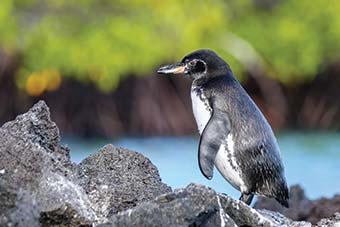
Isabela Island
The largest island in the Galapagos, the island is shaped like a seahorse due to the merging of six large volcanoes. Here you can find mangrove forests, lava crevices and tidal pools. Here you can see penguins, flamingos, sea turtles, marine iguanas and the flightless cormorant.

Back to Top
A day on the Coral I and II
The Coral I
Capacity - 36 Passengers
Restaurant & Bar
Jacuzzi
Choice of 3 en-suite cabin types
A/c & safe deposit Box
Possible to charter a full vessel
Snorkel & Scuba diving opportunities
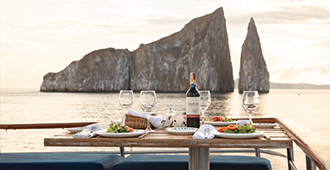
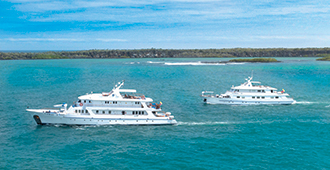
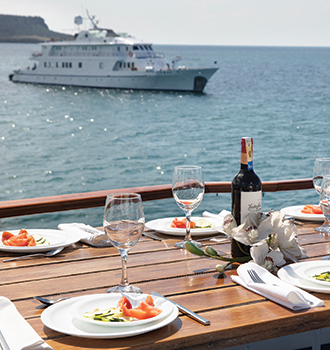
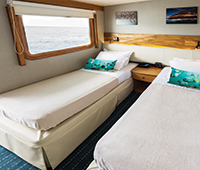
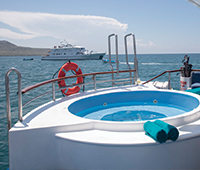
The Coral II
Capacity - 20 Passengers
Restaurant & Bar
Jacuzzi
Choice of 3 en-suite cabin types
A/c & safe deposit Box
Possible to charter a full vessel
Snorkel & Scuba diving opportunities
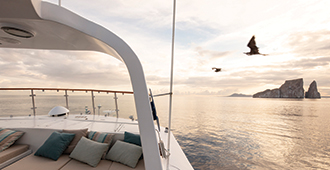
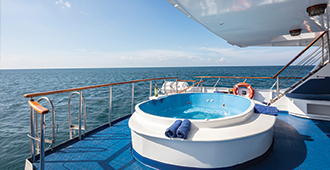
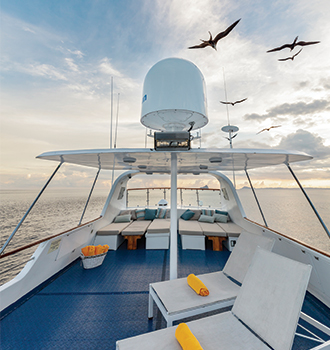
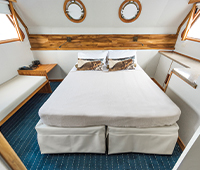
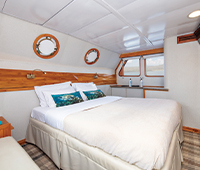
What's included?
 Accommodation
Accommodation
 Galápagos Islands Immigration Control Tax
Galápagos Islands Immigration Control Tax
 Cruise vessel fuel surcharge
Cruise vessel fuel surcharge
 Evening lectures and access to a certified guide
Evening lectures and access to a certified guide
 Multiple wet and dry landings
Multiple wet and dry landings
 Galápagos National Park Tax
Galápagos National Park Tax
 Wet suit & Snorkelling gear
Wet suit & Snorkelling gear
What's NOT included?
 Alcoholic beverages
Alcoholic beverages
 Scuba diving gear
Scuba diving gear
 Visas, Travel Insurance, Personal Items and Single Supplements
Visas, Travel Insurance, Personal Items and Single Supplements
 Spending money - extra meals, snacks, souvenirs, tips and any extras
Spending money - extra meals, snacks, souvenirs, tips and any extras
Coral I & II Yacht Cabins 2019
The type of cabin has an important impact on the enjoyment of your trip and it is important that you choose the right one for your level of comfort. This guide is to make the decision easier and clearer. For a detailed list of prices, please see the prices page of your cruise of choice.
Standard Cabin
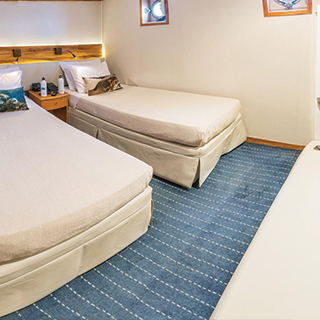
- 2 cabins in the Coral I and 1 cabin in the Coral II
- Measuring an average of 7 m2 / 75ft2
- Located on the Sea Deck.
- Portholes
Standard Plus Cabin
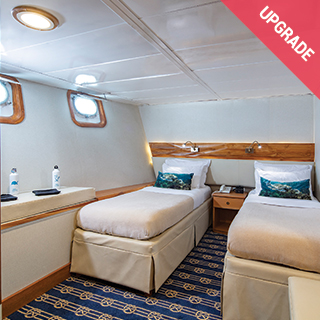
- 8 cabins in the Coral I and 4 cabins in the Coral II.
- Measuring an average of 12 m2 / 128 ft2.
- Double & Triple options available.
- Located on the Sea Deck.
- Portholes.
- Panoramic Skylights.
Junior Cabin
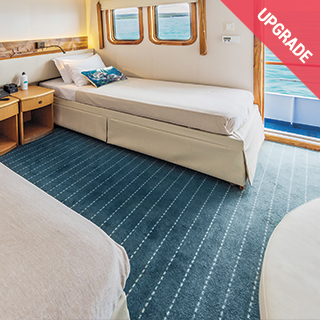
- 8 in the Coral I and 7 in the Coral II.
- Measuring an average of 12 m2 / 128 ft2.
- 3 triple: 2 in Coral I, 1 in Coral II with an extra bed.
- Panoramic windows.
- Located on the Earth and Sky Decks.
- 8 Interconnected.
- En-suite bathroom
What should I pack for the Galapagos?
Packing for the Galápagos can be tricky. One of the ways to get it correct is to pack light clothing to save on luggage space. Clothing which is quick to dry, easy to combine layers and give your the correct amount of coverage from the sun.
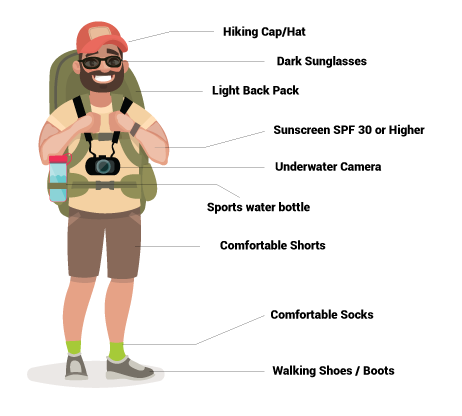
Packing list - Clothing
- Comfortable shoes/boots built for hard or rough terrain
- Lighter footwear for wearing on the boat
- Swimwear
- Rain Jacket
- Sweater or fleece
- Loose shorts and trousers (and at least one waterproof pair)
- Jeans or other trousers for evenings on the ship
- Normal and walking socks
- Quick drying t-shirts/tops
- Swimwear cover-up or sarong/
- Underwear & Pyjamas
- One long sleeved top for cooler nights
Packing List - other essential items
- Binoculars
- Worldwide Adaptor
- Motion Sickness Tablets if applicable
- Toiletries and personal medication
- Electronic and chargers
- Sun Cap/Hat
- Sun Screen (at least SPF30) and Lip Balm
- Sunglasses
- Anti-Fog Spray for snorkel gear
- Dry bag for on shore excursions
- Laundry Bag
- Insect Repellent
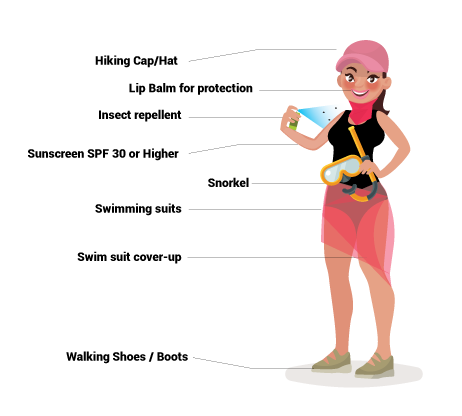

Back to Top
The Galápagos
Wildlife Guide
The Galápagos Islands are famous for the number of unique species. Almost 97% of the land area of the islands is a national park and visits can only be made to specific landing sites with certified naturalist guides. Due to the regulations in place, the animals are less fearful of humans, making the Galápagos islands a great location for viewing wildlife.
Top Rules when visiting the
Galápagos Islands
1. Dispose of all the trash and/or recyclable waste in designated containers
2. Fishing is only allowed on boats authorised by the National Parks
3. Stay within the marked trails at all times
4. Keep distance of at least 6 feet from wildlife
5. Use only authorised tour operators and boats
6. Visitors must explore the national park with an authorised Specialist guide
7. Camping is only allowed in designated areas with prior authorisation
1. Do not remove any elements from the ecosystem
2. Do not purchase products or souvenirs which have been made banned
3. Do not vandalise or introduce any foreign elements into the ecosystem
4. Smoking, drinking and lighting fires are strickly prohibited
5. Do not feed the wildlife
6. Drones and flash photography are strickly prohibited
7. Motorised aquatic recreational vehicles are not permitted

Back to Top



